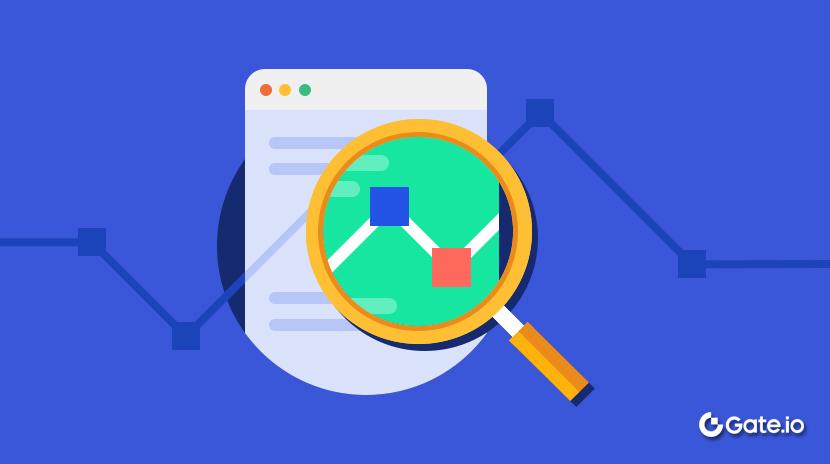基於機器學習的加密貨幣價格預測模型:從 LSTM 到 Transformer
本文深入探討基於機器學習的加密貨幣價格預測模型,重點分析 LSTM 和 Transformer 的應用與比較。同時涵蓋整合鏈上數據、社羣情緒及宏觀經濟因素,並探討黑天鵝事件的影響。加密貨幣市場以其極高的波動性而聞名,這爲投資者帶來了巨大的機會,但也伴隨着顯著的風險,準確預測價格變化對於投資決策非常重要。然而,傳統的金融分析方法往往難以應對加密貨幣市場的復雜性和快速變化。近年來,機器學習技術的發展爲金融時間序列預測,特別是加密貨幣價格預測,提供了強大的工具。
機器學習演算法能夠從大量的歷史價格數據和其他相關資訊中學習,並識別出人眼難以察覺的模式。在衆多機器學習模型中,循環神經網路 (RNN) 及其變體,如長短期記憶 (LSTM) 和 Transformer 模型,因其在處理序列資料方面的卓越能力而受到廣泛關注,並在加密貨幣價格預測領域展現出日益增長的潛力。本文深入分析基於機器學習的加密貨幣價格預測模型,重點比較 LSTM 和 Transformer 的應用,並探討如何整合多元數據以提升預測模型的性能,以及黑天鵝事件對模型穩定性的影響。
機器學習於加密貨幣價格預測之應用
機器學習的基本理念是讓電腦從大量數據中學習,進而根據學習結果進行預測。這些算法通過分析過去的價格變化、交易量和其他相關數據,從中挖掘隱藏的趨勢與模式。常見的方法包括回歸分析、決策樹和神經網路等,這些方法已被廣泛應用於各種加密貨幣價格預測模型的構建中。
在加密貨幣價格預測的早期,大多數研究依賴傳統統計方法。例如,在2017年前後,由於深度學習技術尚未普及,許多研究主要採用 ARIMA 模型來預測比特幣等加密貨幣的價格趨勢。代表性工作之一是 Dong、Li 與 Gong (2017) 的研究,[1]他們利用 ARIMA 模型分析比特幣的波動性,展示了傳統統計模型在捕捉線性趨勢方面的穩定性與可靠性。
隨着技術進步,到了2020年,深度學習方法開始在金融時間序列預測中顯示出突破性的效果。特別是長短期記憶網絡(LSTM),因其能夠捕捉時間序列中的長期依賴關系而受到青睞。 Patel 等人 (2019) 的研究就證明了 LSTM 模型在預測比特幣價格方面的優勢,成爲當時的突破性進展。
到了2023年,Transformer 模型因其獨特的自注意力機制能夠一次性捕捉整個數據序列中的關聯,開始被廣泛應用於金融時間序列預測中。如Zhao等人 2023 年的研究《Attention! Transformer with Sentiment on Cryptocurrencies Price Prediction》成功地將 Transformer 與社交媒體情緒數據結合,大幅提升了預測加密貨幣價格趨勢的精度,標志着這一技術在金融預測領域的成功應用。

加密預測技術裏程碑(來源:Gate Learn 創作者 John)
在衆多機器學習模型中,深度學習模型——尤其是循環神經網路 (RNN) 及其改進版 LSTM 和 Transformer——在處理時間序列數據上具有顯著優勢。 RNN 是專門設計來處理順序數據的神經網路,能夠將前期資訊傳遞到後續計算中,捕捉數據各時間點之間的依賴關系。然而,傳統 RNN 在處理長序列時會面臨「梯度消失」問題,導致很久以前的重要信息逐漸被忽略。爲解決此問題,LSTM 在 RNN 基礎上引入記憶單元和控制閘,能夠長期保存關鍵信息,更好地捕捉長期依賴性。由於金融數據(例如加密貨幣的歷史價格)本身就有明顯的時間關系,[2]LSTM 模型因此特別適合用來預測這類價格走勢。
另一方面,Transformer 模型最初用於語言處理,其自注意力機制允許模型同時考慮數據序列中所有部分之間的關聯,而非依序處理,[3]這使得 Transformer 在預測具有復雜時間依賴性的金融數據方面具有巨大潛力。
各種預測模型之比較
在加密貨幣價格預測中,除了使用深度學習模型外,傳統方法 ARIMA 也常被用作基準。 ARIMA 模型主要捕捉數據中的直線性、固定比例變化,對於許多預測任務來說表現良好;但由於加密貨幣價格波動劇烈且變化復雜,其線性假設往往難以滿足。因此研究發現,當面對非線性與劇烈波動的市場時,深度學習模型往往能提供更準確的預測。
深度學習模型方面,[4]有研究比較了 LSTM 和 Transformer 在預測比特幣價格上的效果,結果發現,在預測價格變化的細節上,LSTM 模型的表現更好。這主要是因爲 LSTM 的記憶機制能夠捕捉短期內的價格變動,讓它在處理這種短期依賴性強的數據時更加穩定和精確。盡管在預測價格變動細節方面,LSTM 可能更出色,但 Transformer 模型也具有很強的競爭力。當結合例如 Twitter 上的情緒數據等更多背景資訊時,Transformer 能夠更全面地理解市場情況,大幅提升預測效果。
此外,也有研究嘗試將深度學習模型與傳統統計模型結合,開發出如 LSTM-ARIMA 的混合模型,既能捕捉數據中的線性關系,也能處理非線性特徵,進一步提高了預測準確性與模型穩定性。
下表總結了 ARIMA、LSTM 和 Transformer 模型在比特幣價格預測中的主要優缺點:

利用特徵工程提升預測準確性
在進行加密貨幣價格預測時,我們除了用歷史價格數據,還會引入更多有用的資訊來幫助模型做出更準確的預測。這些資訊來自不同的來源,包括區塊鏈上的數據、社交媒體情緒以及宏觀經濟指標。這個過程稱爲特徵工程,也就是整理和構造能幫助預測的“特徵”。
常見的特徵數據來源
鏈上數據
鏈上數據是指所有記錄在區塊鏈上的交易和活動資訊,包括交易量、活躍地址數、挖礦難度、哈希率等。這些數據能直接反映市場中的供需關系和網路活動情況,因此對預測價格走勢非常有價值。例如,當交易量顯著增加時,可能意味着市場情緒發生了變化;而活躍地址數的上升則可能顯示出更多人開始使用該加密貨幣,對價格產生積極影響。
鏈上數據通常來自區塊鏈瀏覽器 API 或專門的數據提供平台,例如 Glassnode、Coin Metrics 等。獲取方式可以是使用 Python 的 requests 庫調用 API,或者直接下載 CSV 文件進行分析。
社交媒體情緒指標
如 Santiment 提供的數據會分析 Twitter、Reddit 等平台上的文字內容,評估市場參與者對加密貨幣的情緒,進一步利用自然語言處理(NLP)技術(如情感分析)將文本轉化爲情緒指標。這些情緒指標能夠反映投資者的看法和預期,爲價格預測提供有用的信息。例如,如果社交媒體上大部分表現積極,可能吸引更多投資者進入市場,推高價格;而如果情緒偏負面,則可能引發拋售壓力。 Santiment 等平台還提供 API 和工具,方便開發者將這些情緒數據整合到預測模型中。研究顯示,結合社交媒體情緒分析可以顯著提升加密貨幣價格預測模型尤其在短期預測方面的表現。

Santiment 能提供市場參與者對加密貨幣的情緒數據(來源:Santiment)
宏觀經濟因素
像利率、通貨膨脹率、GDP 增長率和失業率這些經濟指標,也會對加密貨幣的價格產生影響。這些因素會改變投資者對風險的偏好和資金的流向。例如,當利率上升時,投資者可能會把錢從高風險的資產(如加密貨幣)轉向較安全的資產,導致加密貨幣價格下跌;而通貨膨脹率上升時,投資者可能會尋找可以保值的工具,有時比特幣就被視爲一種對抗通脹的資產。
利率、通貨膨脹率、GDP 增長率、失業率等數據通常可從各國政府或國際組織(如世界銀行、IMF)獲取。這些數據常以 CSV 或 JSON 格式提供,也可以通過 Python 的 pandas_datareader 等庫獲取。
下表總結了常用的鏈上數據、社交媒體情緒指標和宏觀經濟因素,以及它們可能如何影響加密貨幣價格:

如何融合特徵數據
一般來說會分成幾個步驟:
1. 數據清洗與標準化
不同來源的數據格式可能各不相同,有的可能有缺漏或數據不一致。這時候,我們需要做一些整理工作,稱爲數據清洗。例如:把所有數據轉換成相同的日期格式、填補缺失的數據、數據標準化使得不同數據之間更容易比較。
2. 數據融合
清洗完後,我們將不同來源的數據根據日期合並在一起,形成一個完整的數據表,讓我們看到每一天的市場情況。
3. 構造模型輸入
最終,我們會將這個整合好的數據轉換成模型能理解的形式。假設我們希望模型根據過去 60 天的所有數據預測今天的價格,那麼我們就把這 60 天的各項數據整理成一個列表(或矩陣),這個列表就作爲模型的輸入。模型通過學習這些數據之間的關系,來預測未來的價格走勢。
通過這樣的特徵工程,模型可以利用更全面的資訊來預測價格,提高預測的準確性。
開源專案案例
GitHub 上存在許多熱門的加密貨幣價格預測開源專案,這些專案利用各種機器學習和深度學習模型來預測不同加密貨幣的價格走勢。
大部分的專案會使用 TensorFlow 或 Keras 等流行的深度學習框架來構建和訓練模型,從過去的價格數據中學習模式,然後預測未來的價格走勢。整個流程通常包括數據預處理(如整理和標準化歷史價格數據)、模型構建(定義 LSTM 層和其他必要層)、模型訓練(通過大量數據不斷調整模型參數以降低預測誤差)以及最終評估和可視化預測結果。
以下舉一個利用深度學習技術預測加密貨幣價格的實際案例:Dat-TG/Cryptocurrency-Price-Prediction 。
該專案的主要目標是使用 LSTM 模型來預測比特幣 (BTC-USD)、以太坊 (ETH-USD) 和卡爾達諾 (ADA-USD) 的收盤價,幫助投資者更好地把握市場走勢。使用者可以通過複製 GitHub 倉庫並按照提供的說明在本地運行該應用程式。

該案例的BTC預測結果(來源:Cryptocurrency Price Dashboard)
該專案的程式碼結構清晰,包括用於獲取數據、訓練模型和運行 Web 應用程式的獨立腳本和 Jupyter Notebook。依據專案目錄結構和其內部代碼,預測模型的建構流程如下:
1.從 Yahoo Finance 下載歷史數據,並利用 Pandas 對數據進行清洗與整理(例如把日期格式統一,填補缺失值)
2.利用這些處理好的數據生成“滑動窗口”——也就是用過去 60 天的數據來預測第 61 天的價格。
3.數據被輸入到利用 LSTM(長短期記憶)搭建的模型中,LSTM 能夠記住短期甚至部分長期的價格變化,因此在預測價格走勢時效果較好。
4.使用 Plotly Dash 將預測結果與實際價格用各種圖表展示出來,並通過下拉選單讓使用者選擇不同的加密貨幣或技術指標,實時更新圖表。

案例專案目錄結構(來源:Dat-TG/Cryptocurrency-Price-Prediction)
加密貨幣價格預測模型風險分析
黑天鵝事件對預測模型穩定性之影響
黑天鵝事件指的是極其罕見、不可預測且具有巨大影響的事件。這類事件通常超出常規預測模型的預期,並可能對市場造成劇烈衝擊。例如,2022 年 5 月發生的 Luna 崩盤事件就是一個典型案例。
Luna 作爲一個演算法穩定幣項目,其穩定性依賴於與姊妹代幣 LUNA 的復雜機制。在 2022 年 5 月初,Luna 的穩定幣 UST 開始與美元脫鉤,迅速引發投資者恐慌性拋售。由於其演算法機制問題,UST 的崩盤導致 LUNA 的供應量急劇增加,其價格在數天內從接近 80 美元暴跌至幾乎爲零,市值蒸發了數百億美元。這不僅對相關投資者造成重大損失,也引發了市場對加密貨幣系統性風險的廣泛擔憂。
因此,當黑天鵝事件發生時,基於歷史數據訓練的傳統機器學習模型很可能未曾接觸過如此極端的情況,導致模型無法作出準確預測,甚至產生誤導性結果。
模型固有風險
除了黑天鵝事件之外,我們還必須注意模型本身固有的一些風險,這些風險可能在日常應用中逐步累積並影響預測效果。
(1)資料偏態與異常值
在金融時間序列中,資料往往存在偏態或含有異常值。如果不進行妥善的資料預處理,可能導致模型訓練時受到噪音幹擾,影響預測精度。
(2)模型過於簡化與驗證不足
部分研究在模型構建時可能過於依賴單一數學結構,如僅採用 ARIMA 模型來捕捉線性趨勢,忽略市場中存在的非線性因素,這容易導致模型過於簡化。此外,若模型驗證不足,可能導致回測表現過高,而實際應用中卻無法有效預測。 (例如,過度擬合現象使得歷史數據預測表現優異,但在實際運用中卻出現顯著偏差。 )
(3)API 數據延遲風險
在實盤交易中,若依賴 API 取得即時數據,而 API 出現延遲或資料更新不及時,將直接影響模型的運作與預測結果,進而導致實盤失效。
提升預測模型穩定性的對策
面對上述各項風險,我們需要採取相應措施來提升模型的穩定性。爲此,下列幾點對策尤爲關鍵:
(1)多元資料來源與資料預處理
結合多種資料來源(如歷史價格、交易量、社羣情緒數據等)來彌補單一模型的不足,並進行嚴謹的資料清洗、轉換與分割。這不僅能提升模型的泛化能力,也能減少因資料偏態與異常值所帶來的風險。
(2)選擇合適的模型評估指標
在模型構建過程中,應根據資料特性選擇合適的評估指標(如 MAPE、RMSE、AIC、BIC 等),以全面評估模型性能並避免過度擬合。定期進行交叉驗證及滾動預測(Rolling Forecasting)也是提升模型穩健性的關鍵步驟。
(3)模型驗證與迭代
建立模型後,應透過殘差分析、異常檢測機制等方法進行充分驗證,並根據市場變化不斷調整預測策略。例如,可引入情境感知學習,根據當前市場狀況動態調整模型參數。或是前文提到的結合傳統模型與深度學習模型形成混合模型,也是一種提升預測精度與穩定性的有效方法。
留意合規風險
最後,除了技術風險外,在使用情緒數據等非傳統數據來源時,也必須關注資料隱私與合規風險。例如,美國證券交易委員會(SEC)對情緒數據的採集與使用有嚴格審查要求,預防因隱私問題導致的法律風險。
這意味着在數據收集過程中,必須對個人識別資訊(例如用戶名、個人資料等)進行匿名化處理。這樣做的目的是防止個人隱私被泄露,同時也避免數據被不當使用。同時必須確保其所採集的數據來源合法,不能通過不當手段(例如未經授權的爬蟲技術)獲取數據。也需要公開說明數據的採集方法與使用方式,讓投資者和監管機構可以了解數據是如何被處理和應用的,這有助於防止數據被用於操縱市場情緒。
結論與未來展望
總之,基於機器學習的加密貨幣價格預測模型在應對市場的波動性和復雜性方面展現出巨大的潛力。結合風險管理策略,並不斷探索新的模型架構和數據整合方法,將是未來加密貨幣價格預測領域發展的重要方向。隨着機器學習技術的不斷進步,我們有理由相信,更準確、更穩定的加密貨幣價格預測模型將會出現,爲投資者提供更有力的決策支持。
相關文章

每個加密貨幣交易者都應該知道的前 5 種圖表模式

潛入超液體



